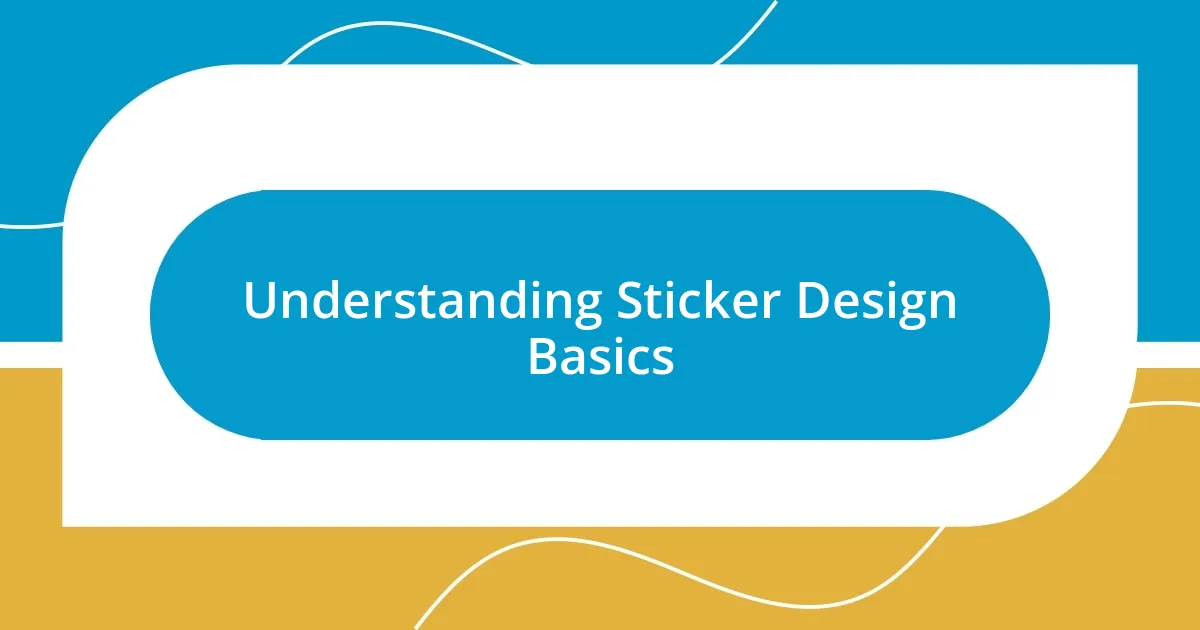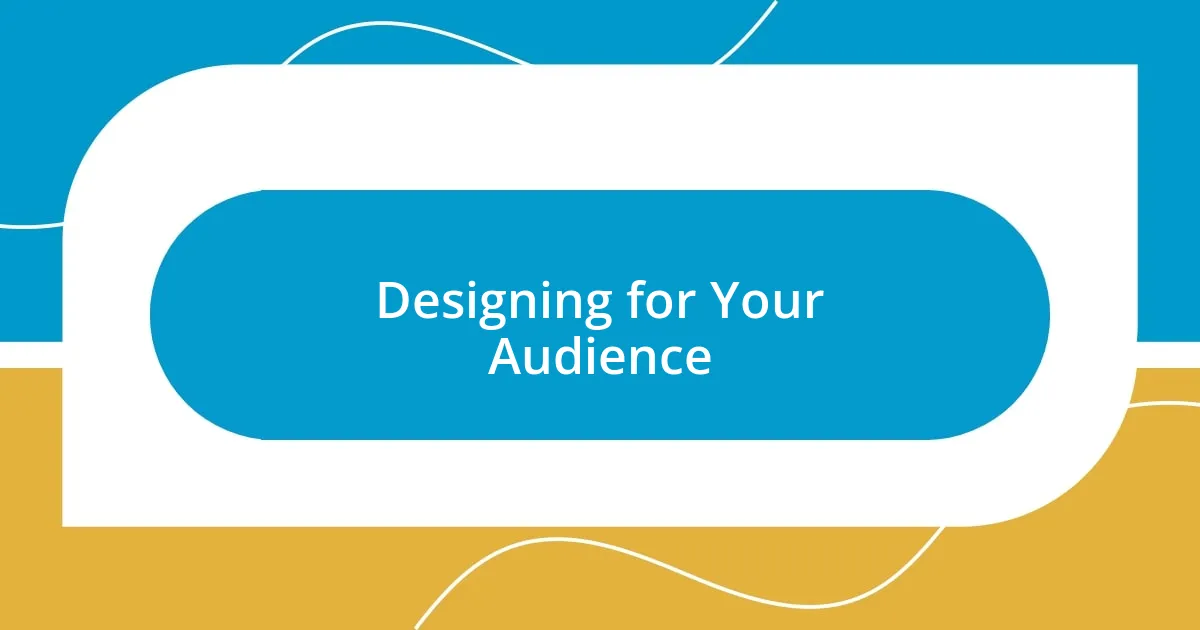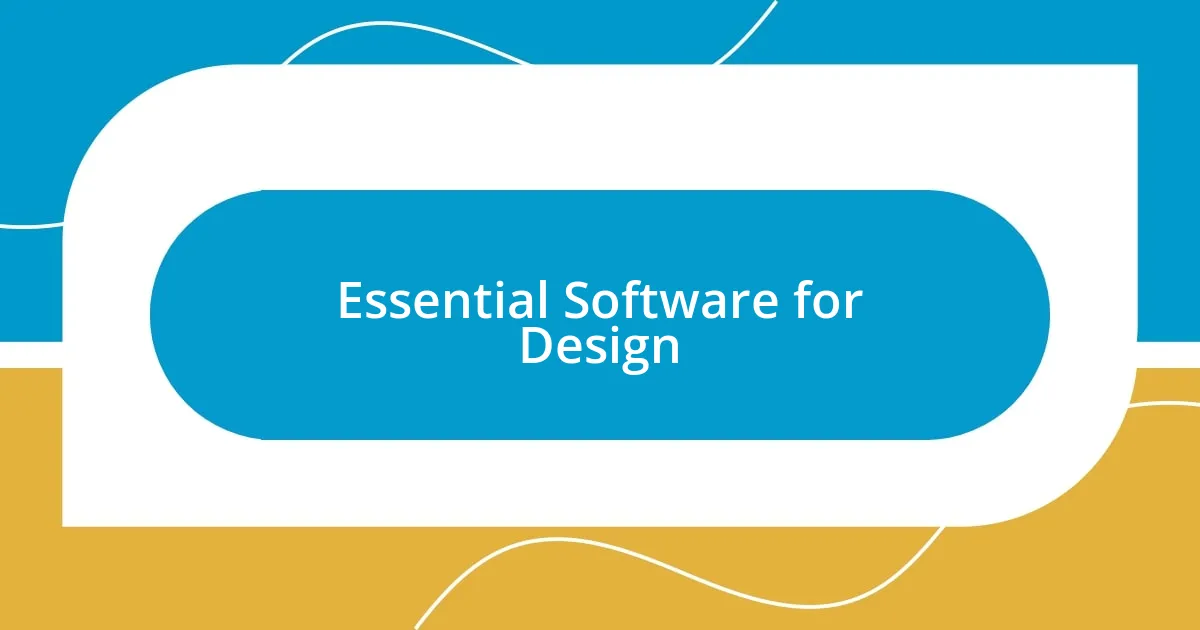Key takeaways:
- Simplicity and clarity in sticker design enhance message recognition and emotional connection with viewers.
- Choosing appropriate materials and finishes significantly impacts the vibrancy and durability of stickers.
- Understanding your audience’s preferences helps tailor designs that resonate more deeply and boost engagement.
- Effective marketing strategies, including social media engagement and real-world showcases, can elevate sticker sales and audience connection.

Understanding Sticker Design Basics
Understanding the basics of sticker design really starts with clarity and simplicity. I’ve noticed that when I’m trying to catch someone’s attention with a sticker, less is often more. Have you ever been in a situation where a busy design left you puzzled instead of intrigued? Simplicity in design can make your message instantly recognizable, creating an emotional connection with the viewer.
Color choice is another fundamental aspect that cannot be overlooked. I remember when I created a sticker for a local event, I opted for a bright, vibrant palette that reflected the energy of the occasion. The result? People couldn’t resist picking it up! It’s fascinating how certain colors can evoke feelings—warm tones can channel excitement, while cooler shades often bring a sense of calm. Think about how colors make you feel; how do they influence your designs?
Lastly, let’s discuss shape and size. Have you ever thought about how these elements impact the overall effectiveness of a sticker? In my experience, a uniquely shaped sticker can spark curiosity and encourage people to engage with it more. I once designed a round sticker for a coffee shop, and the distinct shape made it memorable. The next time you’re crafting a sticker, consider how its physical attributes can enhance your design’s message and appeal.

Choosing the Right Materials
Choosing the right materials for your stickers is crucial for both their appearance and durability. In my experience, I’ve learned that selecting the right type of paper can enhance the vibrancy of colors and ensure they pop just right. I once used a matte finish for a series of stickers and felt they lacked that eye-catching appeal. Switching to a glossy finish transformed them, making my designs stand out, especially in bright light. Remember, the material can also reflect the message behind the design.
- Vinyl: Waterproof and highly durable, ideal for outdoor use.
- Paper: Perfect for indoor stickers, offering a range of finishes like matte or glossy.
- Eco-friendly options: Consider biodegradable materials for a sustainable approach without sacrificing quality.
- Clear materials: These can create stunning designs that blend seamlessly with surfaces, adding a modern touch.
- Specialty finishes: Think about adding textures like foil or embossing for a unique tactile experience that can captivate your audience.

Designing for Your Audience
When designing stickers, knowing your audience is key. I remember when I created a series for a local music festival; I researched the demographics and realized that vibrant, energetic designs would resonate more. It’s rewarding to see how connecting with your audience on a personal level can transform a sticker from just a design into a beloved keepsake. Think about what excites your audience and how you can reflect that in your designs.
Differentiating the type of design can also yield spectacular results. For example, I once tested two sticker styles—one minimalistic and one full of intricate details. The feedback was enlightening; the intricate design attracted a younger crowd, while the minimalistic one appealed to an older audience. It’s important to adapt your approach based on what will connect best with each specific group of viewers. Wouldn’t you agree that appealing to your audience’s preferences can elevate your design to new heights?
Finally, I’ve found that incorporating elements related to your audience’s interests can create a powerful draw. When I designed stickers for a hiking community, I chose earthy tones and nature themes. The response was overwhelming; people loved how the stickers reflected their passion for the outdoors. It’s fascinating how aligning your design with your audience’s values can lead to deeper engagement. Ultimately, understanding who you’re creating for can guide every design choice you make.
| Audience Type | Design Style |
|---|---|
| Young Adults | Vibrant and Intricate |
| Older Adults | Minimalistic and Elegant |
| Nature Lovers | Earthy Tones and Outdoor Themes |

Essential Software for Design
When it comes to designing stickers, the right software can make all the difference. From my experience, I find that Adobe Illustrator is a powerhouse for creating vector designs. Its versatility allows for seamless scaling without losing quality—an essential feature when you want your stickers to stand out at any size. Have you ever struggled with pixelation? I know I have, and it can be frustrating. That’s why vector graphics are the way to go.
For those just starting out, I recommend trying Canva. Its user-friendly interface and pre-made templates allow for quick design creation. I remember when I first dove into sticker design; Canva made it possible to experiment with colors and fonts without the steep learning curve. Plus, the drag-and-drop feature makes it feel like a fun game rather than a chore. It’s amazing how accessible creativity can become with the right tools, don’t you think?
Another fantastic option is Procreate for iPad users. It’s ideal for adding hand-drawn elements to designs, which can give your stickers a unique flair. I often sketch my ideas directly on the screen, and it feels so organic. The sense of satisfaction I get from seeing my hand-drawn designs come to life is unparalleled. Imagine having that kind of personal touch in your stickers! If you’re looking to tap into your artistic side, Procreate could be your best friend.

Tips for Color and Typography
When it comes to color, I can’t stress enough the importance of using a color palette that aligns with the message of your sticker. For instance, I once designed a sticker for a wellness brand, and I chose soft pastels that evoked feelings of calm and tranquility. It was remarkable to see how a simple color change created a soothing experience for the viewer. How do you want people to feel when they see your design?
Typography is another critical aspect that can make or break your sticker’s success. During my early design days, I experimented with various fonts, only to realize that readability was key. I remember using a fancy script font for a birthday sticker, only for friends to struggle reading the message. It hit home that an eye-catching font needs to be easily legible, especially when your stickers are viewed quickly. What good is a beautiful design if no one understands the message?
Lastly, I always try to keep my target audience in mind when selecting colors and fonts. When I created stickers for a children’s charity, I opted for bold colors and playful, rounded fonts. The stickers practically jumped off the page, capturing parents’ and kids’ attention alike. I can’t help but wonder: isn’t it fascinating how just the right combination can transform a sticker into a meaningful piece of art that resonates with its viewers?

Finalizing Your Sticker Designs
Once you’ve settled on your design, it’s crucial to take a step back and evaluate it with fresh eyes. I often let my designs sit for a day, allowing me to return with a more objective viewpoint. It never fails that I notice little details that might need tweaking—like a color that looks fantastic on screen but feels off in print. Have you ever had a design that looked perfect until you saw it in a different light? I definitely have!
Next, I recommend sharing your designs with a trusted friend or fellow designer for feedback. I remember once showing a sticker to a colleague who pointed out that a key element was a bit too busy. That simple observation transformed my final design. It’s amazing how another perspective can enhance our creative output. Sometimes, we’re so close to our work that we miss the forest for the trees. Who knows what valuable insights someone else might have for you?
Finally, don’t forget about the practical side—resolution and file format matter more than you might think. I learned this the hard way once when I sent a design to print, only to realize it wasn’t high enough quality. The disappointment was palpable. So, always double-check that you’re exporting in at least 300 DPI for crisp prints, and save in the right format based on your printing method. Isn’t it comforting to know that these small checks can make such a huge difference?

Marketing and Selling Your Stickers
When it comes to marketing and selling your stickers, social media is a powerful ally. I remember launching my first sticker pack on Instagram—it felt like a gamble. But by using vibrant photos and engaging captions, I connected with an audience that loved my designs. I often ask myself, how can I make my photos jump out? The answer lies in showcasing the stickers in real-world settings, like on water bottles or laptops—it adds relatability.
Engaging with your audience is just as crucial. I’ve found that running polls or asking questions about potential designs not only generates interest but also creates a sense of community. Once, I asked my followers which color scheme they preferred for an upcoming sticker. The responses were enthusiastic, and it made them feel invested in the end product. Does this approach resonate with you? It’s rewarding to see your audience take ownership of your work.
Lastly, consider selling your stickers at local craft fairs or events. I took a leap of faith and set up a booth at a local festival, and it was surprisingly fulfilling. Interacting with customers face-to-face allowed me to gauge their reactions in real-time and receive instant feedback. The excitement in the air was contagious—who would have thought selling stickers could bring such joy? Have you had any moments like that? It’s precious to see how your art lights up someone else’s day.














